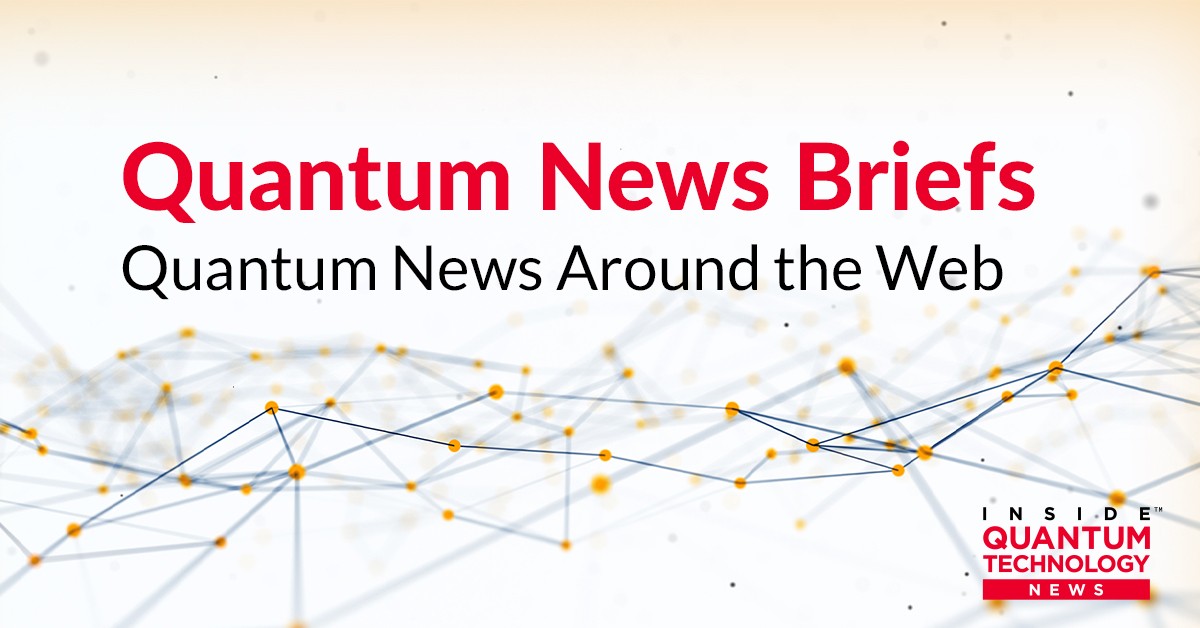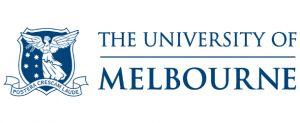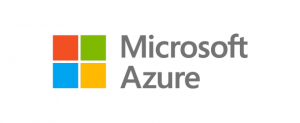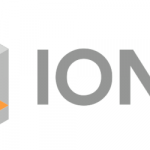Quantum News Briefs November 17: Quantum microscopes could enable atom-scale MRI; Unimon, a new qubit to boost quantum computers for useful applications; Microsoft gives developers a new method for estimating quantum computing needs + MORE

Quantum News Briefs November 17 opens with news from University of Melbourne that Quantum microscopes could enable atom-scale MRI; followed by news from Finland about “Unimon, a new qubit to boost quantum computers for useful applications”. Third is “Microsoft gives developers a new method for estimating quantum computing needs” + MORE.
*****
Quantum microscopes could enable atom-scale MRI
 A new prototype “quantum microscope” may one day analyze matter with unprecedented detail, researchers from the University of Melbourne say. Quantum News Briefs summarizes from IEEE Specctrum.
A new prototype “quantum microscope” may one day analyze matter with unprecedented detail, researchers from the University of Melbourne say. Quantum News Briefs summarizes from IEEE Specctrum.
The novel device may one day probe the performance of next-generation atomically thin 2-D electronics, and run MRI scans on molecules to help gain key insights for medical breakthroughs.
In the new study, researchers developed a prototype quantum microscope based on flakes of hexagonal boron nitride. This ceramic often finds use as an insulating material in atomically thin 2D electronics.
In experiments, the scientists analyzed a flake of chromium telluride, a material that is magnetic just above room temperature. Magnetic materials are often divided into domains in which the magnetic poles all point in the same direction. The researchers were able to image the magnetic domains of the sample under ambient conditions, something that was previously believed impos
A quantum microscope could also map the atomic structures of molecules, essentially “realizing atomic-scale MRI,” Healey says. “This would be extremely useful for biomedical research, because it may allow us to map the atomic structure of some biomolecules that currently evade standard techniques of structure determination.”
In addition, the researchers note that hexagonal boron nitride quantum microscopy, like diamond-based quantum microscopy, can operate in a wide variety of conditions. These include from cryogenic to well above room temperatures, from vacuum to very high pressures, and in liquid settings.
The scientists continue to look for materials that might prove even better for quantum microscopy than hexagonal boron nitride. “We expect this search for the ideal quantum sensor will be an important direction of future research,” Healey says.
*****
Unimon, a new qubit to boost quantum computers for useful applications
 A group of scientists from Aalto University, IQM Quantum Computers, and VTT Technical Research Center have discovered a new superconducting qubit, the unimon, to increase the accuracy of quantum computations. Quantum News Briefs summarizes from Phys.org.
A group of scientists from Aalto University, IQM Quantum Computers, and VTT Technical Research Center have discovered a new superconducting qubit, the unimon, to increase the accuracy of quantum computations. Quantum News Briefs summarizes from Phys.org.
The team has achieved the first quantum logic gates with unimons at 99.9% fidelity—a major milestone on the quest to build commercially useful quantum computers.
Aalto, IQM and VTT have introduced a new superconducting-qubit type, the unimon, which unites in a single circuit the desired properties of increased anharmonicity, full insensitivity to dc charge noise, reduced sensitivity to magnetic noise, and a simple structure consisting only of a single Josephson junction in a resonator. The team achieved fidelities from 99.8% to 99.9% for 13-nanoseconds-long single-qubit gates on three different unimon qubits.
“Because of the higher anharmonicity, or non-linearity, than in transmons, we can operate the unimons faster, leading to fewer errors per operation,” said Eric Hyyppä who is working on his Ph.D. at IQM.
To experimentally demonstrate the unimon, the scientists designed and fabricated chips, each of which consisted of three unimon qubits. They used niobium as the superconducting material apart from the Josephson junctions, in which the superconducting leads were fabricated using aluminum.
“Unimons are so simple and yet have many advantages over transmons. The fact that the very first unimon ever made worked this well, gives plenty of room for optimization and major breakthroughs. As next steps, we should optimize the design for even higher noise protection and demonstrate two-qubit gates,” added Prof. Möttönen. Click here to read article in-entirety.
Related: IQT NORDICS announced for Copenhagen, Denmark June 6-8, 2023 in partnership with the Danish quantum community and several other Nordic organizations from Finland and Sweden
*****
Microsoft gives developers a new method for estimating quantum computing needs
 The Azure Quantum Resource Estimator is a software tool that was originally developed for Microsoft’s internal use. The tool is already guiding the company’s effort to develop full-stack quantum computers, and now it can also help outside developers figure out how much computing power they’ll need to execute a given quantum algorithm in a reasonable amount of time. Quantum News Briefs summarizes Alan Boyle’s article for GeekWire.
The Azure Quantum Resource Estimator is a software tool that was originally developed for Microsoft’s internal use. The tool is already guiding the company’s effort to develop full-stack quantum computers, and now it can also help outside developers figure out how much computing power they’ll need to execute a given quantum algorithm in a reasonable amount of time. Quantum News Briefs summarizes Alan Boyle’s article for GeekWire.
That’s a key question, because the guidelines used for classical computing don’t necessarily apply to the quantum frontier. Unlike classical computers, quantum computers take advantage of an environment where a quantum bit — better known as a qubit — can represent a one and a zero at the same time.
Quantum approaches can be far more efficient than the standard binary computing approach for solving particular kinds of problems: optimizing a network, for example, or figuring out how to design a synthetic molecule to perform a specific chemical task.
There’s a bit of a catch: The kind of quantum computer that the resource estimator uses as its baseline doesn’t exist yet. “What we’ve found is that these quantum machines to run problems that we identify as having practical quantum advantage will need at least a million qubits,” Svore said.
Just last week, IBM unveiled its largest quantum processor, which knits together a mere 433 qubits. IBM is aiming to scale up its systems to more than 4,000 qubits by 2025, and D-Wave Systems is planning to roll out a 7,000-qubit annealing quantum computer in the 2023-2024 time frame. Even those machines will fall far short of the power that Svore and her colleagues at Microsoft have in mind.
*****
Arqit’s QuantumCloud™ can make 58% energy saving
 Arqit Quantum Inc. (Nasdaq: ARQQ, ARQQW) supported a recent study by Dr Basel Halak and Dr Yildiran Yilmaz of Southampton University and Arqit Chief Cryptographer Dr Daniel Shiu called Comparative Analysis of Energy Costs of Asymmetric vs Symmetric Encryption-Based Security Applications comparing the energy consumption between asymmetric and symmetric key applications. The study confirms that Arqit’s technology can reduce the carbon footprints for operationally deployed cryptography. Quantum News Briefs summarizes the announcement made on GlobeNewsWire.
Arqit Quantum Inc. (Nasdaq: ARQQ, ARQQW) supported a recent study by Dr Basel Halak and Dr Yildiran Yilmaz of Southampton University and Arqit Chief Cryptographer Dr Daniel Shiu called Comparative Analysis of Energy Costs of Asymmetric vs Symmetric Encryption-Based Security Applications comparing the energy consumption between asymmetric and symmetric key applications. The study confirms that Arqit’s technology can reduce the carbon footprints for operationally deployed cryptography. Quantum News Briefs summarizes the announcement made on GlobeNewsWire.
Forecasters (A. Andrae and T. Edler) predict that communication technology will contribute up to 23% of the global greenhouse gas emissions in 2030. The imminence of the quantum threat requires quantum encryption solutions to safeguard data against this ominous cyber threat. While these solutions are urgently needed to protect our communication technology, they are also known to be computationally intensive, hence energy demanding.
The academic study found that global adoption of symmetric key systems could save 58% of energy in comparison to the energy required for asymmetric encryption alternatives. So as the migration to quantum safe encryption begins, symmetric key agreement from Arqit offers the environmentally superior alternative, as well as being the only method with independently verified security proof in the market demonstrating zero trust provable quantum safety.
Arqit’s product, QuantumCloud™, enables any device to download a lightweight software agent, which can create encryption keys in partnership with any number of other devices. The keys are computationally secure, optionally one-time use and zero trust. QuantumCloud™ can create limitless volumes of keys in limitless group sizes and can regulate the secure entrance and exit of a device in a group.
*****
Sandra K. Helsel, Ph.D. has been researching and reporting on frontier technologies since 1990. She has her Ph.D. from the University of Arizona.



















